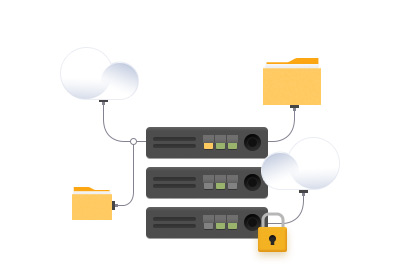
In today's digitally interconnected world, cybersecurity isn't just a concern for large corporations; it's an urgent necessity for businesses and individuals alike. Cybercriminals constantly evolve their tactics and exploit new vulnerabilities, making it imperative to stay vigilant and proactive. This article delves into the top five cybersecurity threats you need to be aware of and offers actionable tips to protect yourself.
- Ransomware: Holding Your Data Hostage
Ransomware is the digital equivalent of a hostage crisis. This malicious software encrypts your files and demands a hefty ransom payment in exchange for the decryption key. The damage is far-reaching: disrupted operations, financial losses, sensitive data breaches, and reputational harm.
- How it Spreads: Ransomware often enters through phishing emails, malicious links, or unpatched software vulnerabilities.
- Prevention Tips:
- Keep your operating system and software updated with the latest security patches.
- Implement robust email filtering solutions to block suspicious attachments and links.
- Regularly back up your data to secure, offline locations.
- Educate your employees about identifying phishing attempts and safe online practices.
- Phishing Attacks: Tricking You into a Trap
Phishing attacks are social engineering tactics designed to manipulate you into divulging sensitive information or clicking on malicious links. Attackers often impersonate legitimate organizations, such as your bank or a well-known company, to gain your trust.
- How it Spreads: Phishing attacks arrive primarily via email but can also appear as text messages, social media messages, or even fake ads.
- Prevention Tips:
- Scrutinize all email senders and URLs for inconsistencies (e.g., slight misspellings, unusual domains).
- Never open attachments or click links from unknown senders.
- Utilize a robust email security solution to proactively detect phishing attempts.
- Enable two-factor authentication (2FA) for sensitive accounts.
- Supply Chain Attacks: Exploiting the Weakest Link
Supply chain attacks target third-party software or service providers with weaker security than your own, essentially using them as a backdoor into your system. Once a malicious actor infiltrates a supplier's network, they can spread malware to businesses relying on those services – potentially including you.
- How it Spreads: Supply chain attacks often involve compromising software updates or exploiting vulnerabilities in widely used third-party components.
- Prevention Tips:
- Conduct thorough security assessments and due diligence of your third-party suppliers.
- Implement strict access controls and software restrictions on vendor-related systems within your network.
- Invest in real-time threat detection and monitoring for your systems and supply chain partners.
- Zero-Day Attacks: When Patches Don't Exist
Zero-day attacks exploit previously unknown vulnerabilities in software (aka zero-day exploits), for which the manufacturer has not yet released a security patch. These attacks are particularly dangerous because traditional security systems may not have adequate defense mechanisms against them.
- How it Spreads: Zero-day attacks can be delivered through various methods, including phishing or drive-by downloads (when you unknowingly download malware just by visiting a compromised website).
- Prevention Tips:
- Stay informed about recently disclosed software vulnerabilities and urgent security updates.
- Consider virtual patching solutions to proactively shield against potential exploits until a software vendor releases an official patch.
- Utilize advanced endpoint protection systems that can detect and block suspicious activity even without traditional malware signatures.
- Internet of Things (IoT) Botnets: Your Devices Turned Against You
IoT devices – everything from smart thermostats and security cameras to internet-connected appliances – offer immense benefits. But their security measures are often lacking, making them tempting targets. Cybercriminals can hijack vulnerable IoT devices and conscript them into massive botnets, launched to carry out distributed denial-of-service (DDoS) attacks that can cripple websites and online services.
- How it Spreads: Weak or default passwords, outdated firmware, and inadequate network segmentation make IoT devices easy targets.
- Prevention Tips:
- Change default passwords on all IoT devices immediately.
- Regularly check for and install firmware updates.
- Isolate IoT devices on a separate network from critical business systems.
Building a Secure Future Together
While Webxloo doesn't offer security assessment, penetration testing, or incident response services, we understand the critical importance of cybersecurity in today's digital world. That's why we prioritize building highly secure products and services:
- Security-First Development: Security is embedded throughout our entire development lifecycle, ensuring our products are designed and built with robust security measures in place.
- Regular Security Audits: We conduct regular internal and external security audits to identify and address potential vulnerabilities promptly.
- Transparency and Communication: We are committed to transparency with our customers regarding potential security concerns and take swift action to address them.
By prioritizing security and offering products built with that focus, we empower you to operate with greater peace of mind.
Stay Informed, Stay Protected
Remember, cybersecurity is an ongoing process. Staying informed about the latest threats and taking proactive steps to secure your data is crucial. We encourage you to continue exploring cybersecurity best practices and consult with security professionals for guidance specific to your needs.
Together, we can create a safer digital environment for everyone.




 Phone Consultation
Phone Consultation
 Request a quote
Request a quote
 Text a Message
Text a Message